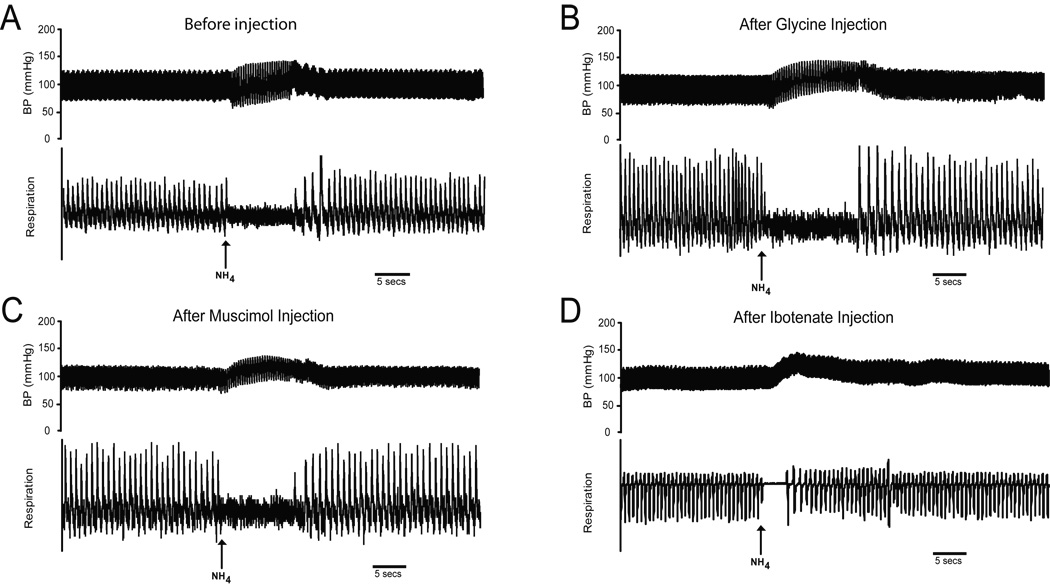Figure 1.
Traces of arterial blood pressure (upper trace) and ventilations (lower trace) showing typical cardiorespiratory responses in four different rats to nasal stimulation with ammonia vapors (arrows). Vapors from a 50% ammonia solution applied to the nasal mucosa for 5 secs produce an increase in arterial blood pressure, a bradycardia, and an apnea (A). Compare the responses to nasal stimulation after bilateral injections of glycine (B), muscimol (C) or ibotenic acid (D) into the CPA of other rats to those seen prior to such injections (A). Note that the increase in arterial blood pressure and apnea persists after all the injections, but the bradycardia is lost and the duration of apnea shortened after the injections of IBO.

